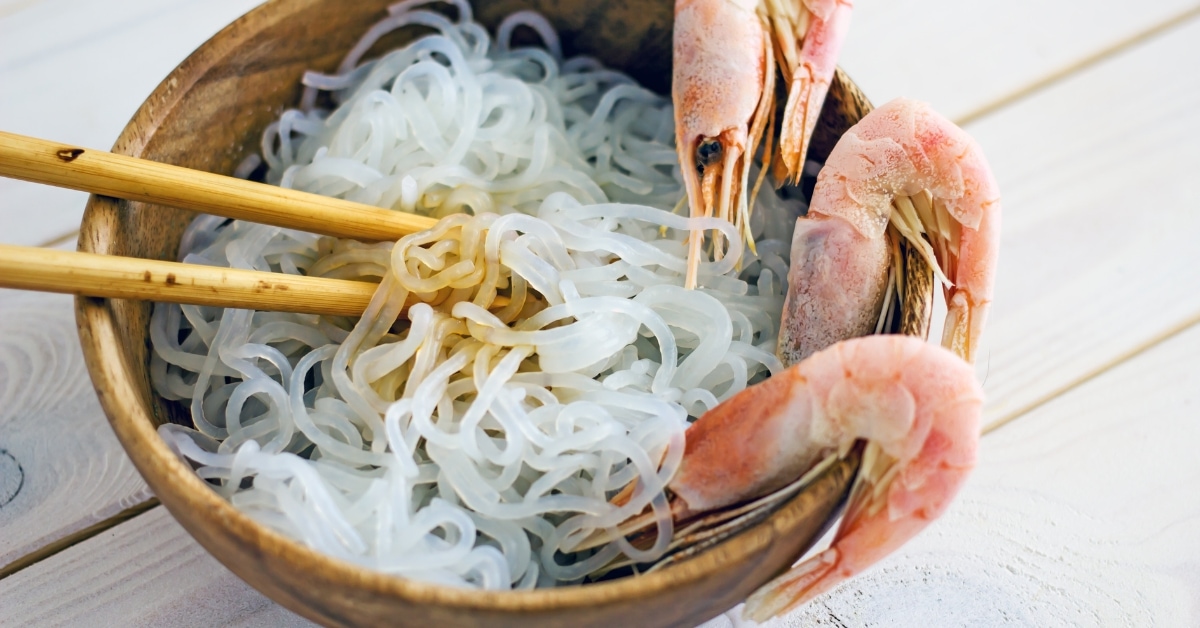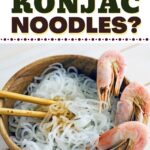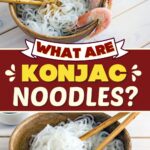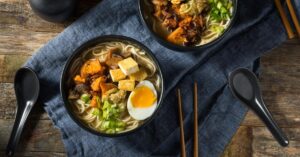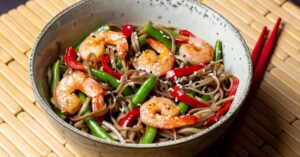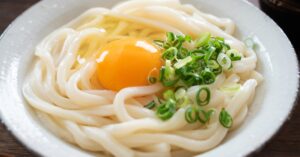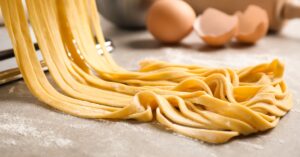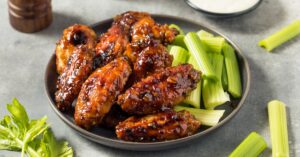In recent years, Konjac noodles have gained popularity as a low-carb, low-calorie alternative to traditional pasta.
Also known as shirataki noodles, these translucent noodles are made from the root of the Asian konjac yam plant.

Konjac noodles have a unique texture and are somewhat chewy.
They’re often used as a gluten-free, low-calorie alternative to traditional wheat-based pasta. People on low-carb diets swear by them!
What Are Konjac Noodles?
Konjac noodles, also known as shirataki noodles, are translucent and gelatinous noodles made from the konjac yam.
They’re low in calories and gluten-free, making them a popular choice for those following specific diets. Konjac noodles have a unique texture. It’s chewy and slightly rubbery.
The noodles are made from the konjac yam’s root. It’s processed into a flour-like substance and then formed into noodles.
They’re commonly used in Asian cuisine, particularly in dishes like stir-fries, soups, and hot pots.
Before cooking, it’s important to rinse the noodles thoroughly and boil them for a few minutes to remove any natural odor.
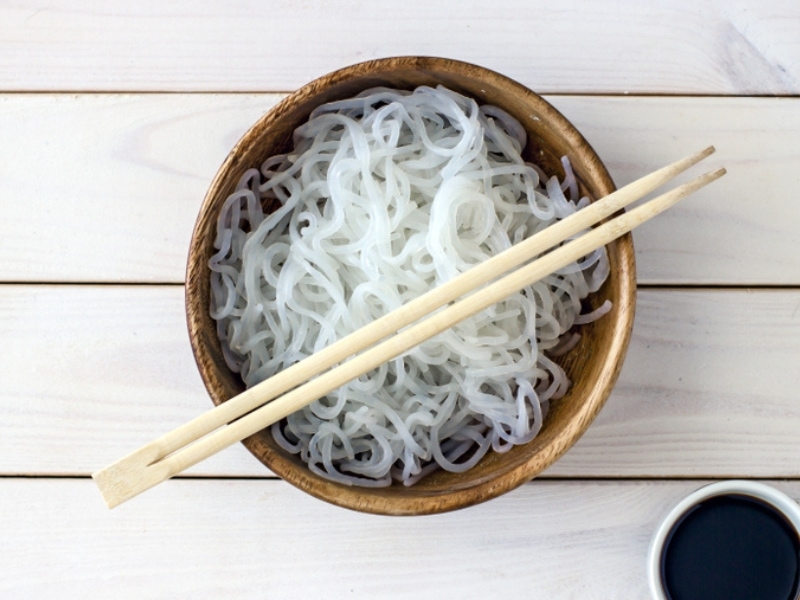
What Do Konjac Noodles Taste Like?
Konjac noodles have a mild, neutral taste. It doesn’t overpower other flavors. They have a slightly earthy undertone due to their plant-based origin.
The texture is unique, with a chewy and gelatinous bite similar to glass noodles.
Konjac noodles readily absorb the flavors of the sauces and ingredients they’re cooked with.
When properly rinsed and prepared, they have no strong or unpleasant taste. The focus of the recipe is on the accompanying flavors rather than the noodles themselves.
Konjac Noodles vs. Rice Vermicelli Noodles
Konjac noodles and rice vermicelli noodles are both popular choices in Asian cuisine.
Konjac noodles, made from the konjac yam, have a chewy and gelatinous texture. Rice vermicelli noodles have a soft and slippery texture.
Konjac noodles are low in calories and carbohydrates, making them suitable for low-carb or weight-loss diets.
Rice vermicelli noodles are made from rice flour and are gluten-free. They also have a mild rice flavor, which pairs well with various dishes. Konjac noodles have a neutral taste and readily absorb flavors from sauces and ingredients.
Konjac noodles are translucent and appear more gelatinous, while rice vermicelli noodles are opaque.
Both noodles can be used in stir-fries, soups, spring rolls, and other Asian dishes.
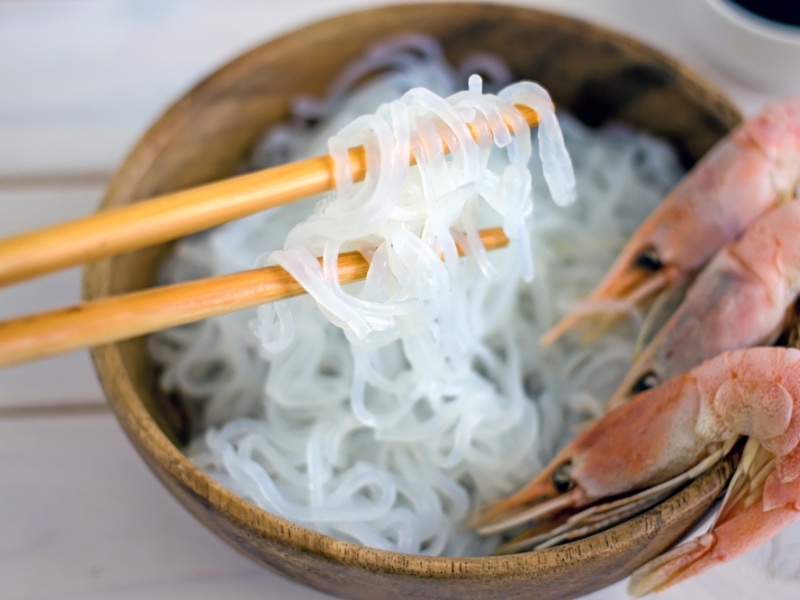
How to Use Konjac Noodles
- Low-Carb Pasta Dishes: Enjoy them in pasta dishes like spaghetti bolognese or carbonara. They create a low-carb and gluten-free option.
- Buddha Bowls: Build colorful Buddha bowls by combining konjac noodles, roasted or raw vegetables, protein, and your choice of sauces or dressings.
- Cold Noodle Salads: Prepare refreshing cold noodle salads using konjac noodles, fresh herbs, crunchy vegetables, and a tangy vinaigrette dressing.
- Stir-Fries: Incorporate them into stir-fry dishes along with your favorite vegetables, proteins, and sauces. They absorb flavors well and provide a low-carb noodle option.
- Noodle Soups: Add them to broth-based soups like ramen, pho, or udon for a lighter and healthier alternative to traditional noodles.
- Noodle Wraps: Use them as a filling for lettuce wraps or spring roll wrappers, along with your desired vegetables and protein. You can also fry them for extra crunch.
How to Cook with Konjac Noodles
- Rinse: Thoroughly rinse the konjac noodles under cold water to remove any liquid or odor from the packaging.
- Boil: Bring a pot of water to a boil and cook the konjac noodles for 2-3 minutes. This helps improve the texture.
- Dry: Drain the boiled konjac noodles and pat them dry using a clean kitchen towel or paper towel.
- Cook with sauce: Add the konjac noodles to your desired dish, such as stir-fries, soups, or salads.
- Mix and heat: Toss the konjac noodles with your other ingredients, ensuring they’re heated through.
- Serve: Plate the konjac noodle dish and garnish them with fresh herbs, vegetables, or protein of your choice.
Where to Buy
- Local Asian grocery stores: Visit your nearest Asian grocery store. You’re likely to find konjac noodles in the noodle or specialty food aisle.
- Online retailers: Check popular online retailers like Amazon, Walmart, or specialty food websites. They offer a wide range of konjac noodle options for delivery to your doorstep.
- Health food stores: Some health food stores or natural food markets may carry konjac noodles in their specialty or gluten-free sections.
- International markets: Explore international markets that cater to diverse culinary needs. They often stock konjac noodles.
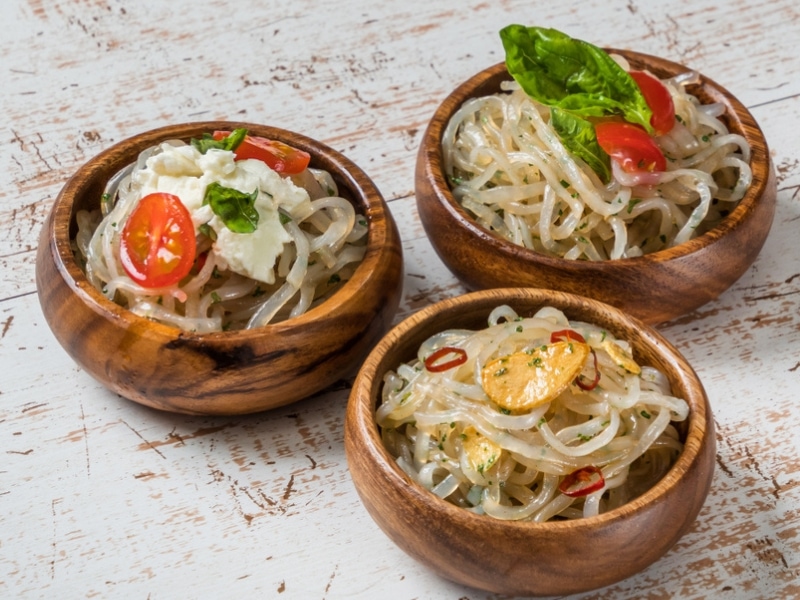
How to Store
Uncooked Konjac Noodles
Keep uncooked konjac noodles in their original packaging or transfer them to an air-tight container. Be sure to store them in a cool, dry place away from direct sunlight.
Follow the expiration date on the packaging and consume them beforehand for the best quality.
Cooked Konjac Noodles
Allow cooked konjac noodles to cool completely before storing. Then, transfer the noodles to an air-tight container or sealable bag. Store them in the refrigerator for up to 2-3 days.
Don’t freeze cooked konjac noodles, as it can affect their texture.
Remember, they have a relatively short shelf life compared to dried pasta. It’s best to consume them within a few days of purchase or preparation to maintain their freshness and texture.


